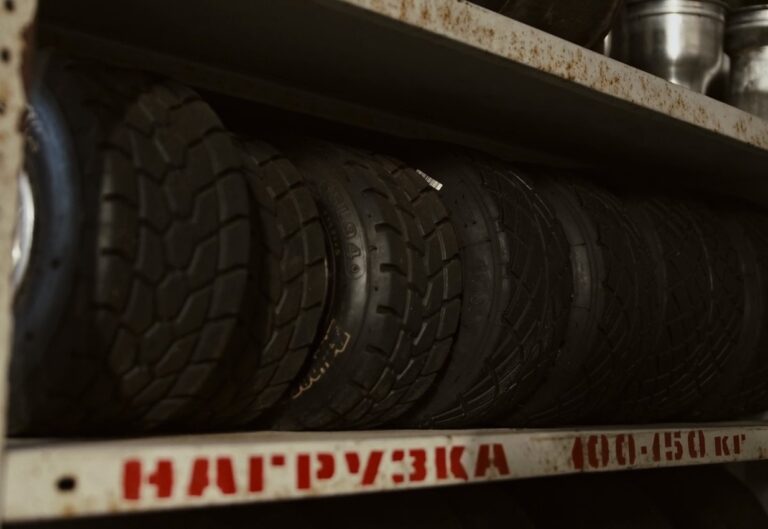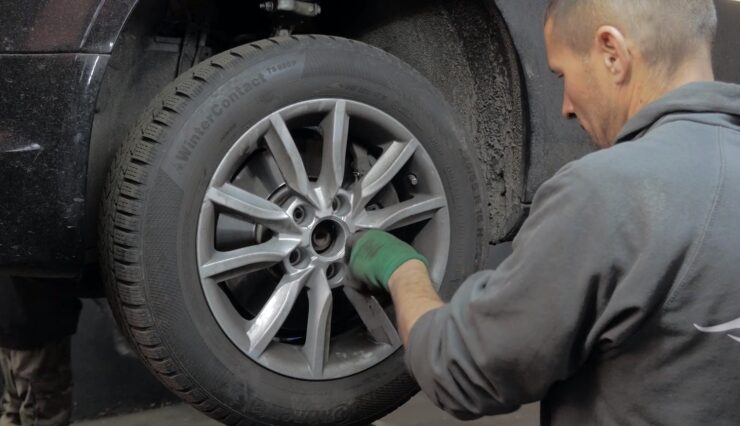During my early years as a mechanic, I remember an instance when a customer rolled into the shop, complaining that his SUV didn’t handle off-road terrain as well as he’d like. He was running 275-width tires and thought that beefing up to a 295 would be a quick fix. It turned out to be not so simple. While the 295s provided better traction, they also rubbed against the wheel wells, creating a whole new set of problems.
This experience was a real eye-opener, not just for the customer, but for me as well. It highlighted the fact that tire width isn’t just a number; it’s a critical component that affects multiple aspects of your vehicle’s performance, from handling and traction to fuel economy.
So, let’s get into it: What’s the real difference between 275 and 295 tires, and what should you consider before making the switch?




An Overview
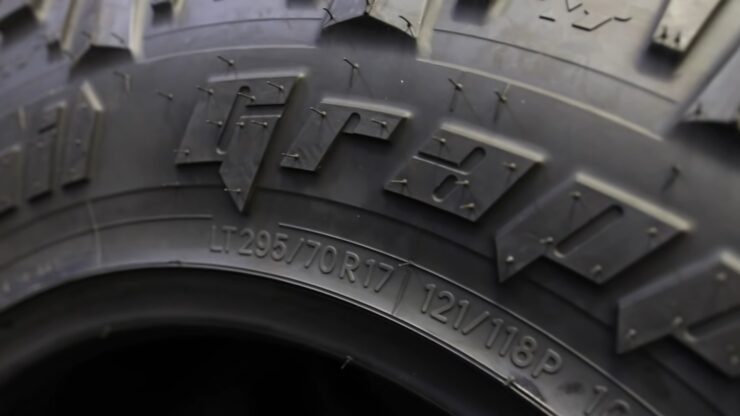
At first glance, the difference between 275 and 295 tires seems to be purely numerical. However, these numbers represent the width of the tire in millimeters. So, a 295 is 20mm wider than a 275 . But there’s more to it than just width.
Key Differences
- Weight: The 295 is generally heavier due to its larger size.
- Gas Mileage: The 275 typically offers better fuel efficiency.
- Load Capacity: This varies between individual tires, but it’s essential to choose a tire with the right load capacity for your needs.
- Stability: Wider tires like the 295 offer better grip and stability.
- Price: 275 are usually more affordable and readily available.
Vehicle Compatibility
Both 275 and 295 can fit a wide range of vehicles. However, it’s crucial to consult your vehicle’s owner’s manual to determine the ideal tire size for your specific model.
| Specification | 275 | 295 |
|---|---|---|
| Width | 275mm | 295mm |
| Typical Aspect Ratio | Varies, but common ones include 60, 65, 70 | Varies, but common ones include 60, 65, 70 |
| Construction | Radial (R) | Radial (R) |
| Common Wheel Diameter (in inches) | 15, 16, 17, 18, 20 | 18, 20, 21, 22 |
| Coverage | Slightly narrower footprint | Wider footprint, offering potentially better stability |
| Market Availability | Widely available | Widely available, but might be slightly pricier due to increased width |
How to Read the Tire Size?
When you see a tire size like “295/70R18,” it might seem like a complex code, but breaking it down makes it much more straightforward:
- 295: This is the tire’s width in millimeters. In this case, the tire is 295mm wide.
- 70: Known as the aspect ratio, this number represents the height of the tire’s cross-section as a percentage of its width. Here, the height is 70% of the 295mm width.
- R: This stands for Radial, indicating the tire’s construction. Radial tires have layers of fabric with cords running perpendicular to the tire’s tread, enhancing ride comfort.
- 18: This number denotes the diameter of the wheel in inches. The tire is designed to fit an 18-inch wheel.
Performance Differences
You might wonder how a slight increase in tire width can affect the overall performance of your car. Let’s examine how.
Handling and Grip
Wider tires like the 295 offer better grip on the road compared to 275 tires. This means that the car is generally more stable and can handle corners better. The improvement is especially noticeable during spirited driving or in high-performance vehicles.
Acceleration and Braking
A wider tire also means better traction, which affects acceleration and braking. You’ll find that a 295 tire offers a bit more “bite” when you press the gas pedal or slam on the brakes. But remember, better performance often comes at a cost, which we’ll get into later.
Fuel Efficiency
Your tires have a big role in how much fuel your car uses. Here’s how 275 and 295 tires stack up in this regard.
Rolling Resistance
A 275 tire typically has less rolling resistance than a 295 tire. This means it takes less energy to move the car forward. Lower rolling resistance often leads to better fuel efficiency.
Weight Factor
Wider tires usually weigh more than narrower ones. More weight can mean more fuel consumption. So, even though a 295 tire might give you better performance, it could also make your car less fuel-efficient.
Safety Considerations
Safety is a major concern for any driver. So, how do 275 and 295 tires compare in terms of safety?
Wet Road Conditions
Wider tires generally perform better on wet roads. The added width in 295 tires can disperse water more effectively, reducing the risk of hydroplaning. However, the tread pattern also plays a role in this, so always check that as well.
Load Capacity
Wider tires can usually carry more weight. If you have a heavier vehicle or plan to tow something, a 295 tire might be a better choice. But keep in mind, you should always check the load index of the tire, which tells you its maximum carrying capacity.
Features & Specifications of 275
Features of 275
- Width: 275mm
- All-season performance
- Available in various sizes
- Durable build with great traction
- Thick rubber construction
- Grooves and Sipes for enhanced grip
- Impressive performance across various weather conditions
- Eliminates vibration for comfortable driving experience
- Pocket-friendly
- Efficient MPG
- The width is smaller compared to the 295
Features & Specifications of 295
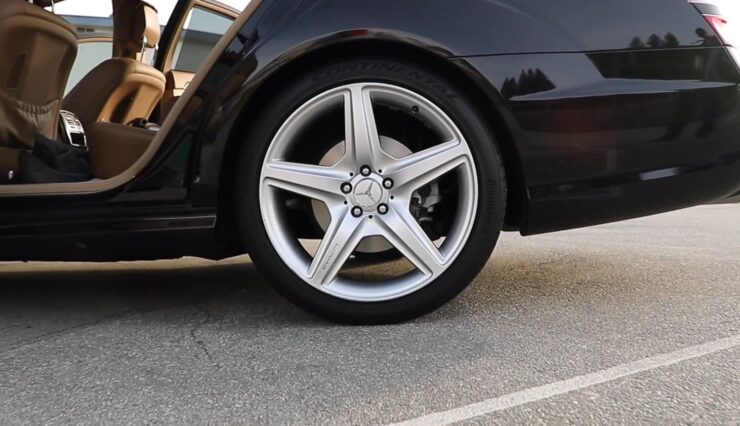
Features of 295
- Width: 295mm
- All-season performance
- Available in a wide range of sizes
- Thick rubber construction
- Excellent traction and hydroplaning resistance
- Maximum coverage, stability, and grip
- Reliable performance on uneven/rough terrains
- Better surface coverage
- Better handling and comfort on rough roads
- Long-lasting use/performance
- Heavier
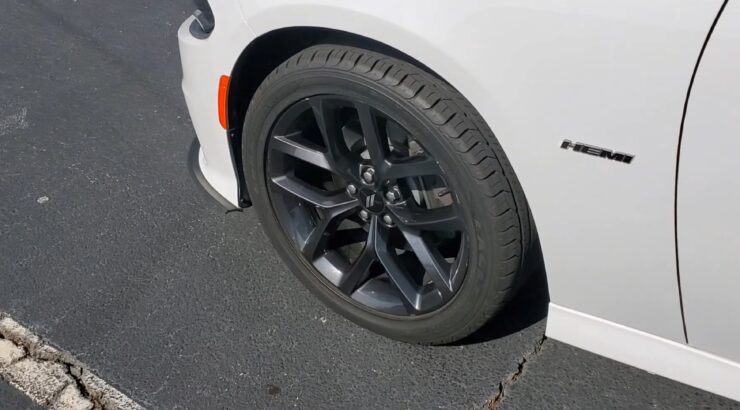
Vehicles that Need 275
- Land Rover
- Porsche Cayenne
- Porsche Panamera
- Porsche Cayenne
- Tesla Model X
- Acura MDX
- Volvo XC60
- Volvo XC90
- Volkswagen Touareg
- Bentley Continental
- Bentley Bentayga
- Lexus LX
- Lexus GX
- Nissan Patrol
- Nissan Patrol Safari
- Nissan Safari
- Nissan Titan
- Nissan Armada
- Chevrolet C1500
- Chevrolet Corvette
- Chevrolet Camaro
- Chevrolet Cheyenne
- Chevrolet Silverado
- Chevrolet Silverado 1500
- Chevrolet Silverado 1500 Classic
- Chevrolet Suburban
- Chevrolet Suburban 1500
- Chevrolet Suburban 2500
- Chevrolet Tahoe
- Chevrolet Silverado 1500 LD
- Toyota Land Cruiser
- Toyota Land Cruiser Cygnus
- Toyota 4runner
- Toyota FJ Cruiser
- Toyota Sequoia
- Toyota Tundra
- Toyota Supra
- Daewoo Musso
- Dodge Ram 3500
- Dodge Dakota
- Dodge Ram 1500
- Dodge Ram 2500
- Dodge Viper
- Dodge Durango
- Dodge Challenger SRT
- Dodge Charger
- Dodge Magnum SRT
- Dodge Continental GT
- Dodge Continental GTC
- Dodge Continental Supersports
- Ram 1500
- Ram 3500
- Ram 1500 Classic
- Ford Expedition
- Ford F-150
- Ford F-250
- Ford Lobo
- Ford Mustang Cobra
- Ford Mustang Mach 1
- Lincoln Navigator
- Lincoln Mark LT
- Lincoln Mark Vill
- Lincoln Blackwood
- Mitsubishi Challenger
- Mitsubishi Pajero
- Mitsubishi Raider
- Mitsubishi L200
- Mitsubishi Montero Sport
- Mitsubishi Pajero Sport
- Mitsubishi Shogun
- Mitsubishi Shogun Sport
- Mitsubishi Strada
- Mitsubishi Triton
- Mercedes-Benz M-Class
- Mercedes-Benz M-Class AMG
- Mercedes-Benz CL-Class
- Mercedes-Benz CL-Class AMG
- Mercedes-Benz CLS-Class
- Mercedes-Benz E-class
- Mercedes-Benz E-class Cabriolet
- Mercedes-Benz E-Class Coupe
- Mercedes-Benz S-Class
- Mercedes-Benz S-Class AMG
- GMC Sierra 1500
- GMC Sierra 2500HD
- GMC Canyon
- GMC Acadia
- GMC Yukon
- GMC Yukon XL
- Aston Martin V8 Vantage
- Aston Martin DB9
- BMW 5 Series
- BMW 6 Series
- BMW 8 Series
- BMW M3
- BMW M4
- BMW M5
- BMW M8
- BMW Z4
- BMW X6
- BMW Z8
- BMW X7
- BMW X5
- BMW X3
- BMW X4
- BMW X5 M
- BMW X6 M
- BMW iX3
- Ferrari 360 Challenge Stradale
- Ferrari 360 Modena
- Ferrari 360 Spider
- Ferrari 812 GTS
- Ferrari 812 Superfast
- Ferrari F12tdf
- Jaguar F-Type
- Jaguar S-Type
- Jaguar XJ
- Jaguar XK
- Infiniti QX56
- Infiniti QX80
- Infiniti QX4
- Jeep Gladiator
- Jeep Wrangler
- Jeep Grand Cherokee
- Maybach 57
- Maybach 62
- Audi Q7
- Audi A8
- Audi RS6
- Audi RS6
- Audi RS7
- Audio S8
- Kia K9
- Kia K900
- Honda Pilot
- Volkswagen Touareg
Vehicles that Need 295
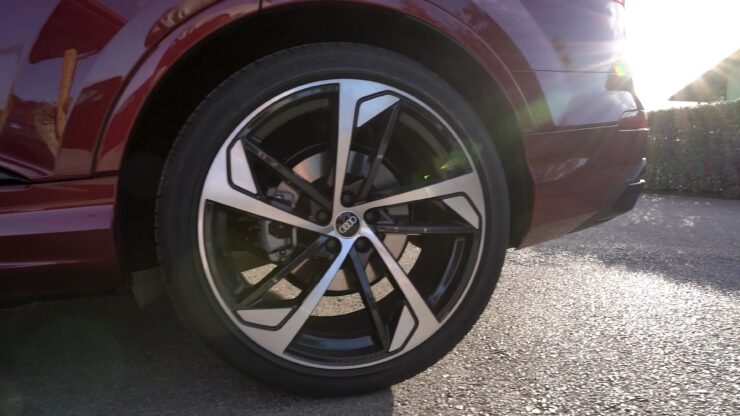
- Dodge Viper
- Dodge Durango SRT
- Porsche 911
- Porsche Boxster
- Dodge Ram 2500
- Dodge Ram 3500
- Dodge Durango
- Jeep Grand Cherokee
- Porsche Macan
- Audi Q7
- Audi RS Q8
- Bentley Continental GT
- Bentley Flying Spur
- Bentley Bentayga
- Chevrolet SSR
- Lexus GX
- Maserati Levante
- Mercedes-Benz GLC-Class
- Mercedes-Benz GLC-Class AMG
- Mercedes-Benz GLC-Class Coupe AMG
- Mercedes-Benz M-Class AMG
- Plymouth Prowler
- Porsche Cayenne
- Porsche Macan
- Jaguar F-Pace
- BMW X5 M
- BMW X6 M
- BMW Alpina XD3
- BMW Alpina XD4
- SsangYong Rexton
- Maserati Levante
- Volkswagen Touareg
- Cadillac Escalade
- Toyota 4runner
- Rolls-Royce Cullinan
- Land Rover Range Rover Sport
- Jaguar F-Pace
FAQ

What is the main advantage of installing a tire that has a lesser aspect ratio?
Usually, tires with a lesser aspect ratio offer improved handling when driving on the road than those with a higher aspect ratio. For instance, a tire that has 60 as its aspect ratio improves handling significantly than a tire with a 70 aspect ratio.
Can my vehicle’s rim size be changed?
Yes, you can change your vehicle’s rim size; however, you will have to make other adjustments along the line. For instance, you will have to replace your tires to fit and support the upgrade.
What if my tire doesn’t have the load index written on it?
In some cases, your tire may not carry this information, and you can check your owner’s manual.
Which tire size is better for off-road driving, 275, or 295?
Both tire sizes can be suitable for off-road driving, depending on the specific terrain and conditions. However, generally, wider tires such as 295 provide better traction and stability on rough and uneven surfaces. It’s important to consider other factors such as the tire’s tread pattern, construction, and durability when choosing a tire for off-road driving.
Can I mix 275 and 295 on my vehicle?
It’s not recommended to mix tire sizes on a vehicle, as it can affect the handling, stability, and safety of the vehicle. If you need to replace your tires, it’s important to choose the same size and type of tire for all four wheels.
Verdict
Choosing between 275 and 295 isn’t just about picking a wider or narrower option. It’s about understanding the intricate balance between performance, efficiency, and suitability for your specific driving needs.
The decision between 275 and 295 boils down to a combination of personal preferences, driving habits, and vehicle specifications. It’s not a one-size-fits-all answer. By understanding the nuances and implications of each size, you’re better equipped to make an informed choice that aligns with your driving needs and values.
Safe driving!
Related Posts:
- Difference Between 285 and 295 Tires in 2024- Which…
- Difference Between 275 and 305 Tires - Know Which is…
- Difference Between 275 and 285 Tires in 2024 -…
- Difference Between 265 and 275 Tires in 2024 - Let's…
- Difference Between 235 and 245 Tires - Best Suited…
- Difference Between 225 and 235 Tires - Easily Find…

